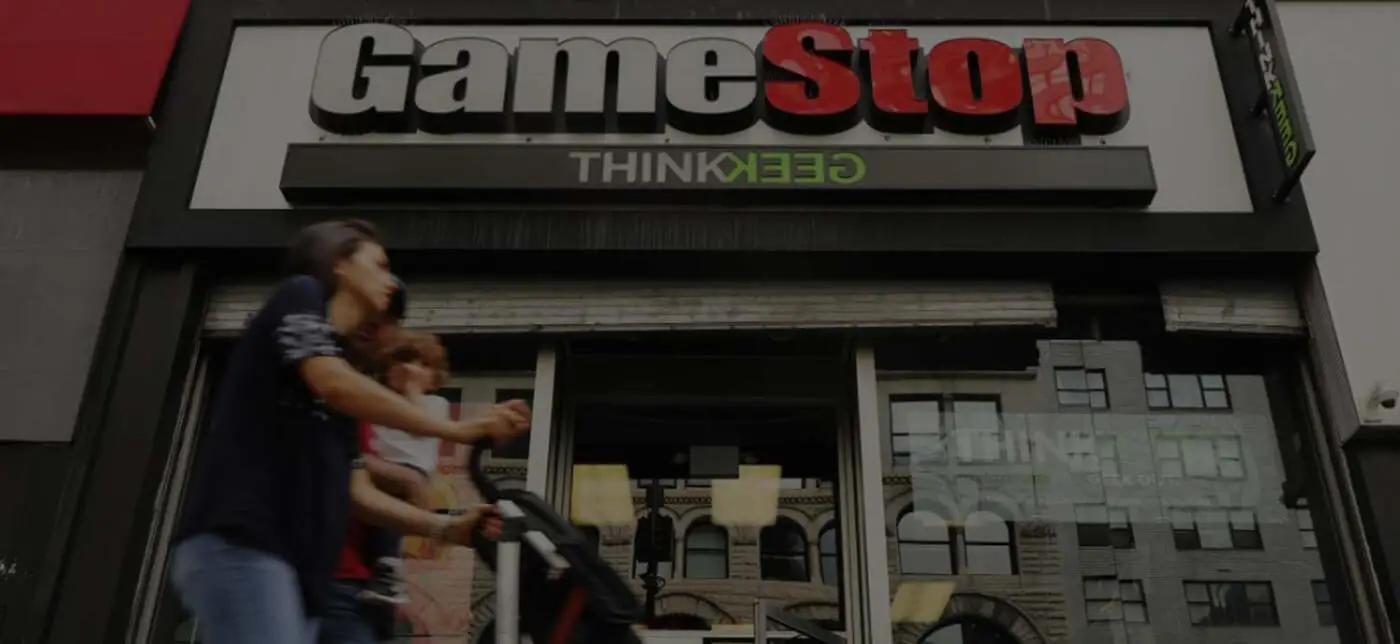Keep pace with the rapidly evolving fintech industry by subscribing to the BIGcast Network. Get weekly insights from industry leaders John Best and Glen Sarvady, delivered straight to your preferred podcast platform. Join our community and stay informed about the latest trends shaping the credit union industry. Subscribe today and ensure you’re always ahead of the curve.

The GameStop Aftermath- What to Watch For
If I gave you a tip in early January on a stock that proceeded to triple in price in less than a month you’d be pretty happy, right? That’s hardly the prevailing attitude about GameStop, however. Of course, this is because the until-recently disregarded stock was briefly up more than twenty-fold in the interim.
Now that the dust has begun to settle and the price of GME (GameStop’s ticker symbol) seems to be stabilizing, let’s assess what we saw and what we might expect. John Best and I debated the topic- from very different viewpoints- on last week’s BIGCast. We now have another six days of market history to draw upon, and no shortage of reaction from across the financial spectrum.
I’ll leave a full recounting of the tale to others (the Wall Street Journal and the Motley Fool have done an especially thorough job) but in brief, a loose amalgamation of individual investors communicating via Reddit’s WallStreetBets board noticed an unusually high level of short selling in GME and smelled an opportunity. Enter Robinhood, the mobile trading app that helped to popularize zero commission trading for the small stakes player.
With an army of retail investors placing small bets more or less in concert, shares of GME quickly rose from a baseline of $18- inflicting great pain on hedge funds that had sold the stock short. This angle fueled headlines, which drew more amateur traders attracted by a “stick it to the man” angle. Virtually overnight, a phenomenon was born. GME stock briefly reached $490, then spent a couple of days in the $300 range.
From there it got really interesting. At least one hedge fund needed to be bailed out, and Robinhood twice went back to its investors for an additional $3.4 billion in capital. The app also restricted trading in GME and a few other suddenly volatile stocks, drawing significant ire and prompting accusations of “stacking the deck” in favor of established players. The actual reason was more mundane- the clearing houses responsible for completing the trades behind the scenes demanded additional collateral from Robinhood to account for their massive spike in volume, leaving the still young company little choice but to throttle activity while it shored up capital.
It’s also worth noting that Robinhood was merely the poster child for a broader trend. Other retail trading apps, including household names like Schwab, also saw significant increases in downloads. Larger firms like Schwab were better equipped to weather volume surges.
For every winner there is of course a loser. WallStreetBets regulars who got in early and rode out the storm (or better yet, sold near the peak) are likely quite pleased. Many others who bought at $300 are confronted with steep losses, however. Similarly, some hedge funds were badly bruised, but the odds are good at least some of those professionals the Reddit crew took glee in antagonizing ended their run at a profit.
So what’s next? There’s talk of a Robinhood IPO, which would be a fascinating event given its newfound notoriety as well as the potential for additional regulatory constraints. There’s a chance that short sellers may think twice before allowing short interests to become so outsized again; let’s see if a new level of market restraint has been imposed, at least temporarily. One insider suggested to me that the greatest turmoil was caused by an influx of options trading- a strategy typically reserved for seasoned investors. Expect regulators to explore additional restrictions on their use, similar to the “qualified investor” rule. The era of tree options trading may be short lived.
Perhaps most interesting, will a new breed of individual investors stick around, or will these additional accounts fall dormant as quickly as they were onboarded?
